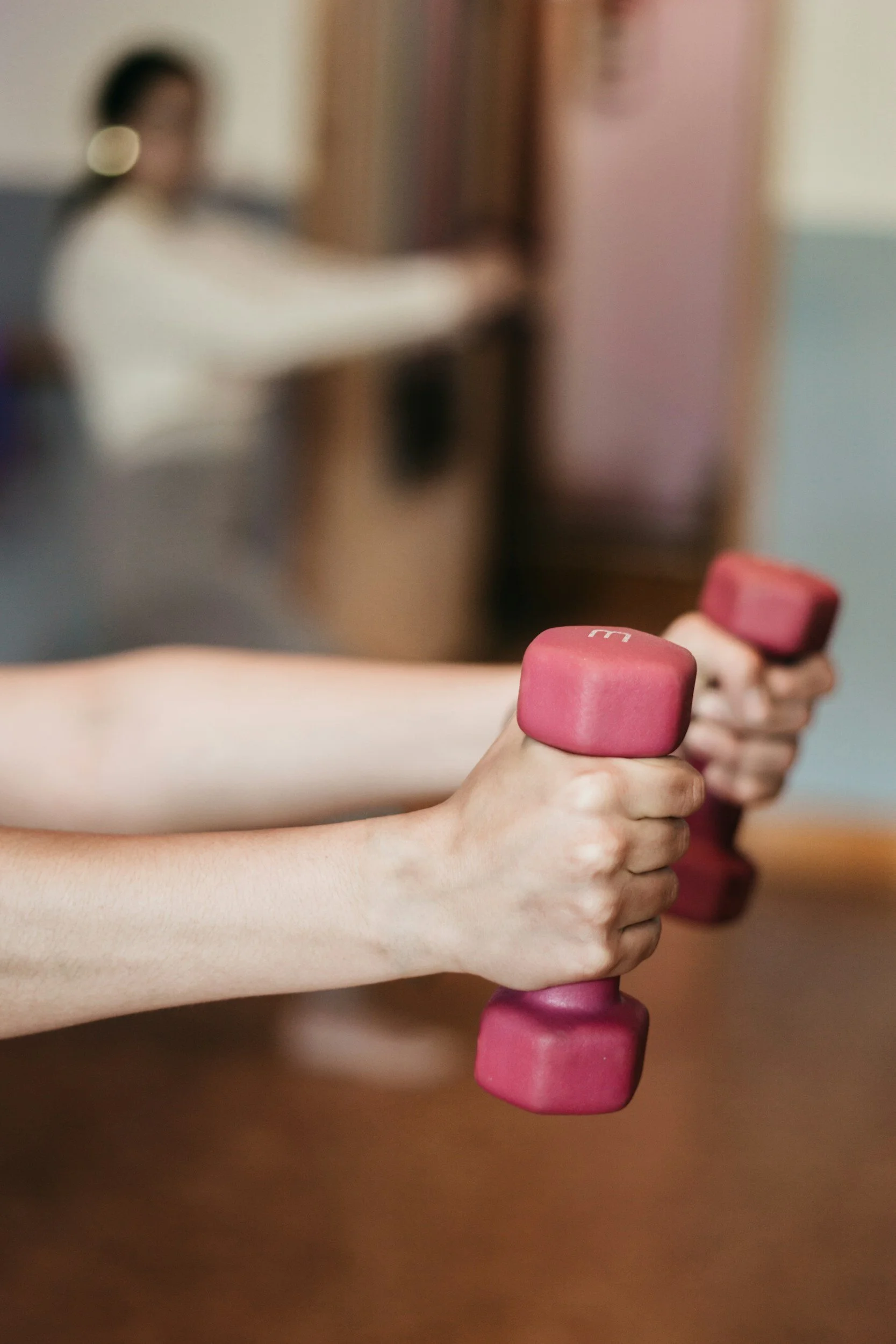Activity vs. Exercise for Pain Management—and Where Yoga Fits in
/What is the difference between activity and exercise, and how can it affect how much pain you experience? Here we explore the key differences between physical activity and exercise, why exercise plays a crucial role in reducing pain, and how yoga might be the exercise regimen you are looking for.
Activity vs. Exercise: Understanding the Difference
Physical activity is a broad term that encompasses any body movement. In everyday life it can be categorized into areas like occupational activities, household tasks, or sports—including chasing after kids to gardening to playing basketball. Exercise, however, is defined as “a subset of physical activity that is planned, structured, and repetitive and has as a final or an intermediate objective the improvement or maintenance of physical fitness” (Public Health Rep).
In short, exercise is intentional and progressive and is designed to improve certain aspects of your physical fitness like strength, mobility, or heart or lung health. By engaging in exercise, you directly target the areas you need to focus on with the goal of improvement over time, which is why exercise is essential for managing physical pain.
Why Exercise is Essential for Pain Management
While all movement is beneficial, exercise offers a powerful tool for pain reduction. Here’s how:
Strengthens Muscles and Improves Flexibility: Exercise strengthens the muscles that support your joints, improving stability and reducing strain. Increased flexibility helps maintain a wider range of motion, further reducing pain. With targeted exercise you can work the specific regions of muscles of the body that will help improve your condition.
Boosts Endorphins: Physical activity triggers the release of endorphins, which help improve mood and reduce the perception of pain.
Improves Sleep: Regular exercise contributes to better sleep quality, which is crucial for pain management and overall health. When well-rested, our bodies are better equipped to manage discomfort and recover worked muscles.
Reduces Inflammation: Exercise can help decrease inflammation, a contributor to pain, but note that it can also increase inflammation, which illustrates why it’s important to be intentional with your exercises—pick ones that will help, not hinder, you on your path to pain reduction.
Yoga: A Modality for Pain Relief
Yoga embodies the principles of a pain-reducing exercise because it combines the following:
Structured, Repetitive Movements: Yoga poses (asanas) can target specific muscle groups, improving strength and flexibility over time. It is also a full body practice, allowing for all systems and muscles to work together in a cohesive manner.
Focus on Breath: Yoga emphasizes mindful breathing, which helps manage stress and tension, conditions often linked to pain.
Low Impact: Many yoga styles are gentle on the joints, making them accessible for people with various pain conditions.
Can you experience pain while exercising?
While it isn’t ideal to experience pain while exercising, it can happen. If it does, make sure to consult with your doctor and consider finding a trainer, physical therapist, or yoga instructor who specifically works with pain management.
To learn more about what to do when you have pain in a yoga class, see my post on the subject.
I teach yoga at an orthopedic clinic. Recently I shadowed a pain management doctor on his rounds. He engaged with patients who proudly informed him of their walking regimens or how they gardened on the weekends. Each time, he asked them whether these activities made them feel better. Their answer was always no—they had made an appointment with him because they were still in pain. The doctor then instructed each of them to not confuse activity with exercise. For example, walking, though low intensity, introduces impact on the body in certain joints or nerves, so it may not be an appropriate exercise for everyone—at least in the early stages of their recovery or pain management process.
My time with the doctor reinforced to me the fact that just because certain activities make you physically active, they don’t necessarily help reduce your pain or make you stronger—and may even be making your condition worse. Exercise that is planned and progressive—as a means to advance your fitness—is what he suggests. This is evidenced by doctors prescribing physical therapy for certain conditions where patients follow a specified plan to make them stronger or more mobile in certain areas.
Recently I had a revelation about my own physical activity. I love to lift light weights and do cardio circuits, often following along to a video workout because it is easy to access online. Though being physically active isn’t always fun, I feel the endorphins and benefits of doing it. I always thought of my workouts as exercise. However, I now understand that while some of what I do might be considered exercise, other elements might be classified as activities, similar to gardening or playing a sport. This doesn’t mean I should stop what I’m doing or alter my workouts. It is a reminder that unless I am doing specific exercises to improve my body’s current conditions, like managing my scoliosis pain, my workouts don’t really qualify as exercise. When I am actively lifting weights to strengthen, say, my triceps—and there is nothing wrong with that—I can’t expect this activity will manage my pain or improve my scoliosis or asthma. If I want to reduce the symptoms associated with those conditions, I need to do exercises that address them head-on.
Taking a closer look at my physical activities made me realize that parts of what I am doing could be contributing to, not alleviating, my pain. My recommendation to you is to analyze your own activities to determine if they are helping or hindering your physical condition. Take this information to your doctor or care team to help them formulate a fitness—aka exercise—plan tailored just for you.
For more about managing pain with yoga see these posts:
Pain in Marichyasana: What Causes It and How to Avoid It
Why You Have Pain in Downward-Facing Dog and How to Fix It
Can yoga reduce hip pain?
Why do people with leg length discrepancies have pain?



